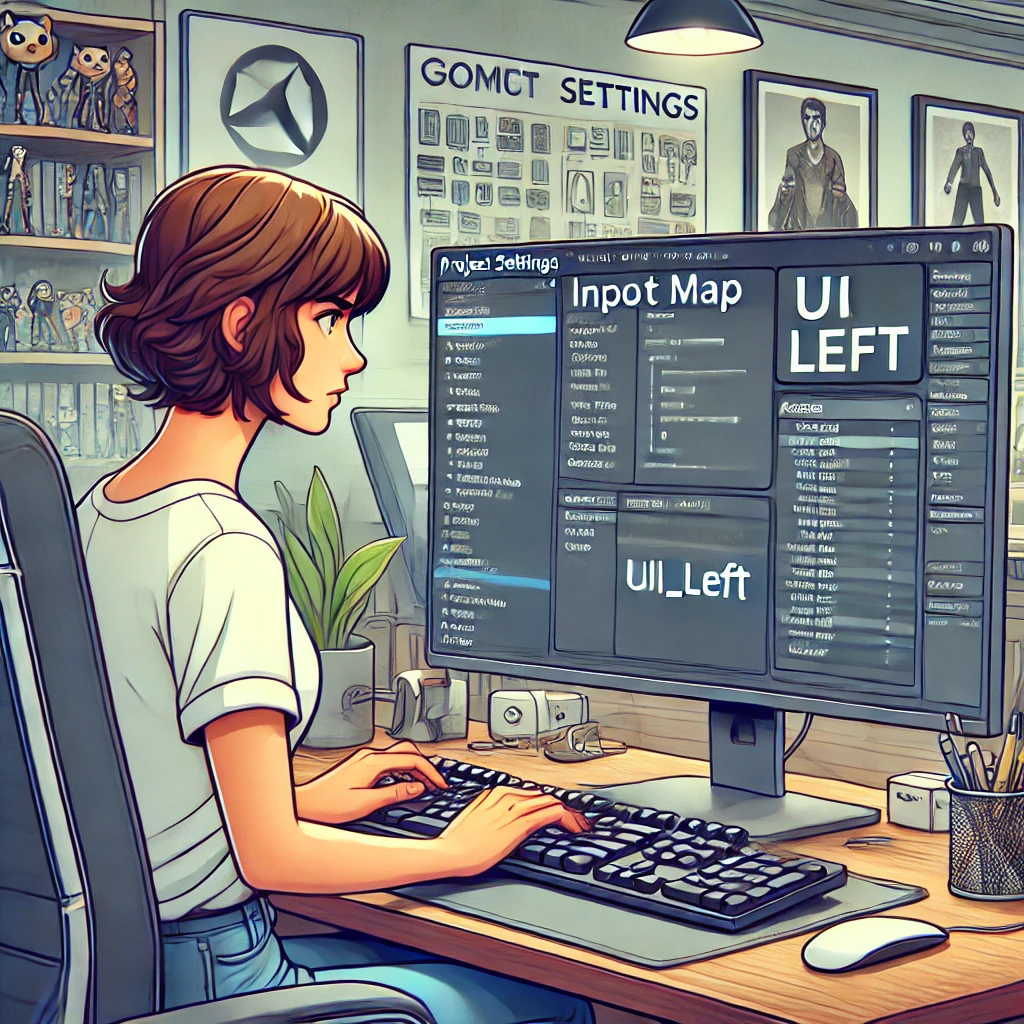Introduction: Navigating Godot’s UI Bindings
Godot Engine is a versatile and powerful tool for game developers that offers extensive customization options for game controls. One such feature is the ability to edit input bindings, including the UI_Left action. This action is pivotal for navigating through menus and controlling characters or cursors in a game. This guide provides a thorough exploration of how to hard edit the binding for UI_Left, enhancing your game’s interactivity and control fluidity Godot How to Hard Edit the Binding for UI_Left.
Understanding UI_Left in Godot
In Godot, UI_Left is a default input action used to capture leftward movements within user interfaces. It is part of Godot’s built-in input map, which supports a variety of devices and input methods. Understanding this foundational element is crucial for developers looking to create intuitive and Godot How to Hard Edit the Binding for UI_Left responsive game controls.
Exploring Various Types of Bindings: Soft and Hard
Input bindings in Godot can be categorized into two types: soft and hard bindings. Soft bindings are flexible and can be overridden or modified at runtime, typically through scripts or user preferences. Hard bindings, on the other hand, are more rigid and are set directly within the project settings, making them less susceptible to changes during gameplay. This distinction is essential for developers when deciding how to implement and adjust game controls.
Step-by-Step Process: How to Hard Edit the Binding for UI_Left in Godot
To hard edit the binding for UI_Left, follow these detailed steps:
Step 1: Access the Project Settings
First, open your Godot project and navigate to the main menu. Here, you will find the Project menu item. Click on Project followed by Project Settings to open the settings window where input bindings are managed.
Step 2: Open the Input Map Tab
Within the Project Settings dialog, locate and select the Input Map tab. This tab lists all the input actions currently configured in your project. Here, you will handle the editing of UI_Left or any other inputs.
Step 3: Locate the UI_Left Action
Scroll through the list of actions until you find UI_Left. This action is one of the default inputs provided by Godot, primarily used for UI navigation. If UI_Left is not already listed, you can add it by typing UI_Left in the action field and clicking the Add button.
Step 4: Modify or Add New Bindings
To change the existing binding for UI_Left, click on the existing key or button under the Key or Button column next to the action. Press the new essential or key you wish to assign. Godot will capture this input as the new binding.
If you want to add additional bindings, click on the Add Key or Add Joy Button (for joystick buttons) beside the UI_Left action name. Then, press the key or button you wish to bind. You can assign multiple keys or buttons to the same action if needed.
Step 5: Save and Test Changes
After setting up the new binding, close the Project Settings by clicking on the Close button. Your changes are automatically saved. It’s essential to test the new binding in your game to ensure it functions as expected. Run your game and try using the newly assigned key or button to interact with the UI or control the game, verifying that UI_Left performs as intended.
Step 6: Adjust Scripts if Necessary
If your game scripts use the UI_Left action, ensure they correctly reference the new bindings. You can check this by using the Input.is_action_pressed('UI_Left') method in your scripts to see if it responds to the new input. Adjustments may be necessary if the script doesn’t recognize the new key or button configuration.
Customizing with Input Actions
Beyond merely editing bindings, Godot allows for the creation of custom input actions. This feature is beneficial for developers aiming to enhance user engagement and game functionality. To add a new input action:
Step 1: Define the Input Action
Understand to Project > Task Options > Feedback Chart. Here, you’ll see a list of predefined actions. To customize UI_Left or add a new variation, click Add Action and name it, for example, Custom_UI_Left. This action can now be configured with different keys or buttons as needed.
Step 2: Assign Keys or Buttons
Click on the newly created Custom_UI_Left and add the desired key by clicking Add Key or Add Joy Button. Press the key or button on your device to bind it to the action. You can assign multiple keys or buttons to the same action for more complex control schemes.
Step 3: Save Your Settings
After configuring the inputs, ensure you save your changes by clicking Close in the project settings. These settings will now be hardcoded into your game, providing consistent behavior.
Properly Using Input in Your Scripts
Effectively utilizing hard-edited inputs in your Godot scripts ensures that the game behaves as expected. Here’s how to implement the Custom_UI_Left in Godot scripts:
gdscriptCopyfunc _process(delta):
if Input.is_action_pressed('Custom_UI_Left'):
# Perform the action associated with moving left
move_left()
This script checks if the Custom_UI_Left action is triggered and executes the move_left() function accordingly, which should contain the logic for moving an object left on the screen.
Creating a Configurable Control System
Offering players the ability to configure their controls enhances the user experience by accommodating personal preferences and various hardware setups. Configurability is key in modern game design. Allowing players to customize their control settings can significantly enhance their gameplay experience. Implement a system within your game that lets users rebind their controls through a simple interface, storing these preferences for future sessions.
Step 1: Create a Settings Menu
Develop a settings menu in your game where players can customize their controls. This menu should list all the available actions like Custom_UI_Left.
Step 2: Allow Players to Rebind Controls
In the settings menu, provide an interface where players can rebind their controls. This can be done by capturing key presses and reassigning them to the selected action.
Step 3: Save and Apply Settings
Ensure that the new bindings are saved to the player’s preferences and are loaded each time the game starts. Use Godot’s ConfigFile class to read and write these settings to a file.
gdscriptCopyvar input_map = ConfigFile()
input_map.load("user://input_map.ini") # Load the file
# Save new bindings from the settings menu
input_map.setValue('bindings', 'Custom_UI_Left', new_key)
input_map.save("user://input_map.ini")
Step 4: Test and Validate
Always test the new control system thoroughly to ensure that all inputs are correctly recognized and that they persist between game sessions.
The Significance of Customizing the Binding for UI_Left in Godot
Customizing input bindings, especially for fundamental actions like UI_Left, is crucial for creating a user-friendly gaming environment. It not only improves accessibility but also allows for a more personalized gameplay experience, accommodating different player preferences and input devices.
Troubleshooting Common Problems
When customizing bindings, developers might face issues like conflicts between actions or non-responsive inputs. To troubleshoot Godot How to Hard Edit the Binding for UI_Left , ensure no duplicate bindings exist and verify that all changes are correctly saved and applied. Testing extensively across various devices can also help identify and resolve unforeseen issues.
Key Benefits of Hard Editing the Binding for UI_Left in Godot
Hard editing the binding for UI_Left offers several advantages:
- Enhanced Control: Provides precise and predictable responses to player inputs.
- Better Customization: Allows for tailored game experiences that can adapt to different user needs.
- Increased Accessibility: Makes the game more accessible to players with different preferences or limitations.
Conclusion: Mastering Input Customization in Godot
Hard editing the binding for UI_Left is a powerful technique for game developers using Godot. It not only enhances the control system but also boosts overall game quality and player satisfaction. By mastering input customization, developers can significantly elevate their games, making them more engaging and accessible for a wider audience.


